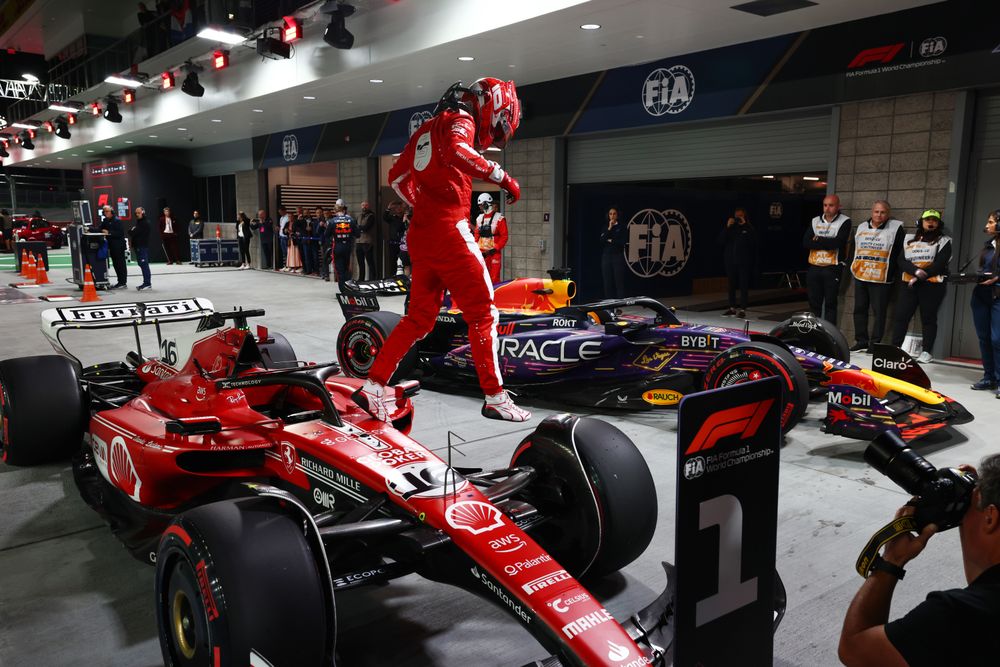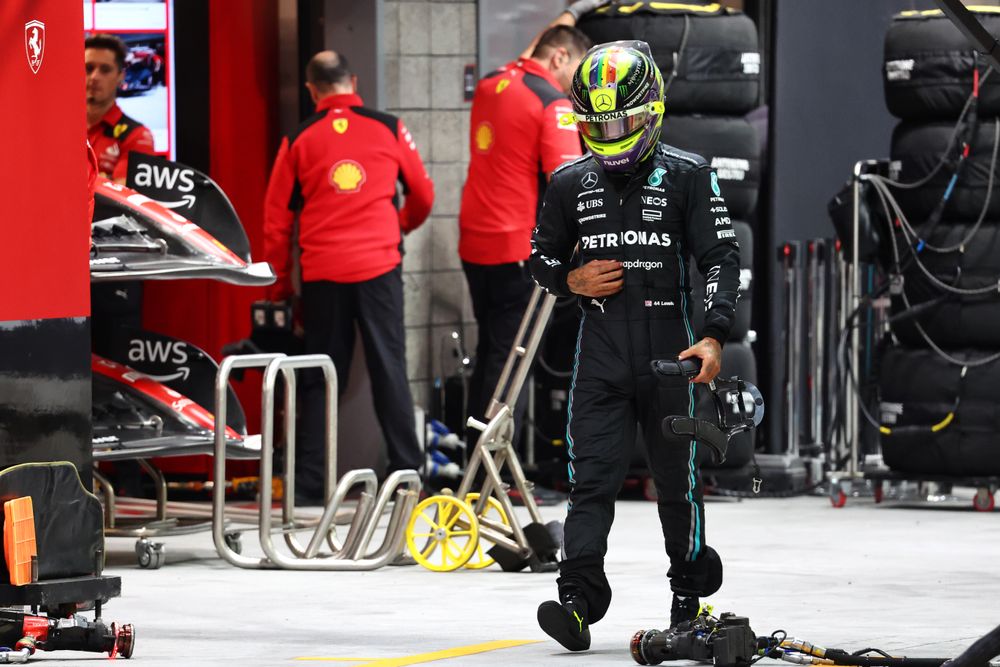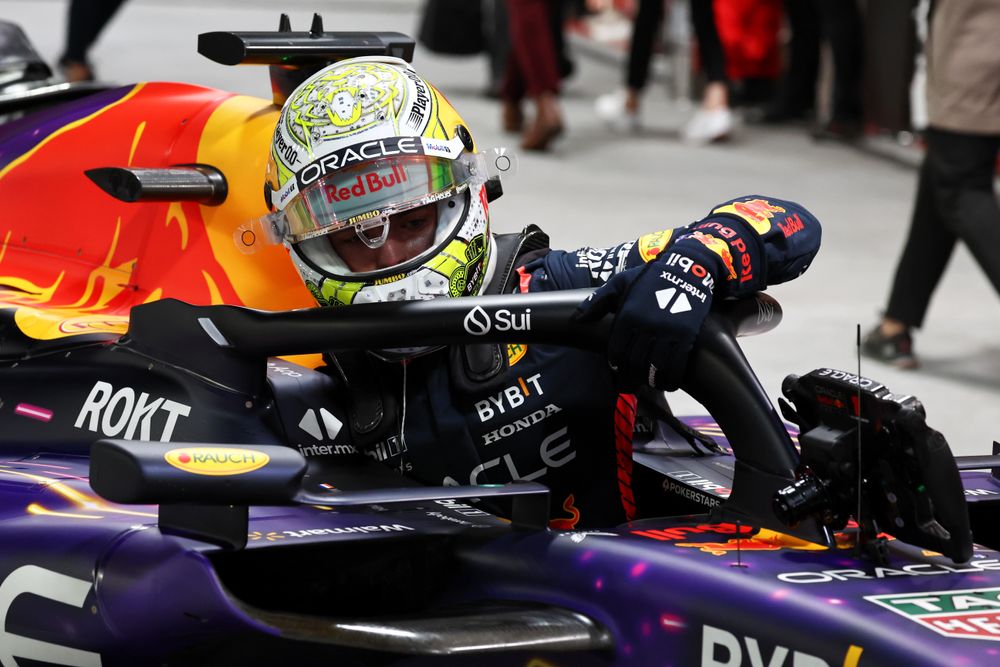Up Next

Ferrari has looked like the fastest car over a lap all Las Vegas Grand Prix weekend and just how obvious that was actually had the effect of increasing its advantage over Red Bull - for reasons which we’ll come to in a moment.
But before looking at how the dynamic between polesitter Charles Leclerc and Red Bull’s Max Verstappen played out, why is it that Ferrari’s form relative to Red Bull is so variable? And what does that have to do with the sparkling form here of Williams?
This generation of car, with its very stiff suspension to support the ground effect aero platform which works over such a narrow range of ride heights, is intrinsically more sensitive to getting the tyres to work. The stiff, short-travel suspensions make the cars very difficult to adjust around the global mean of track characteristics and temperatures.
They have a certain window of conditions in which they work before the tyre drops out of its temperature window and becomes more dominant than any differences in aero performance between the cars. This is compounded by how restrictive the bodywork regulations are and how sensitive the floors are to just the smallest change. The nature of these cars places them in a pretty inflexible set-up window.
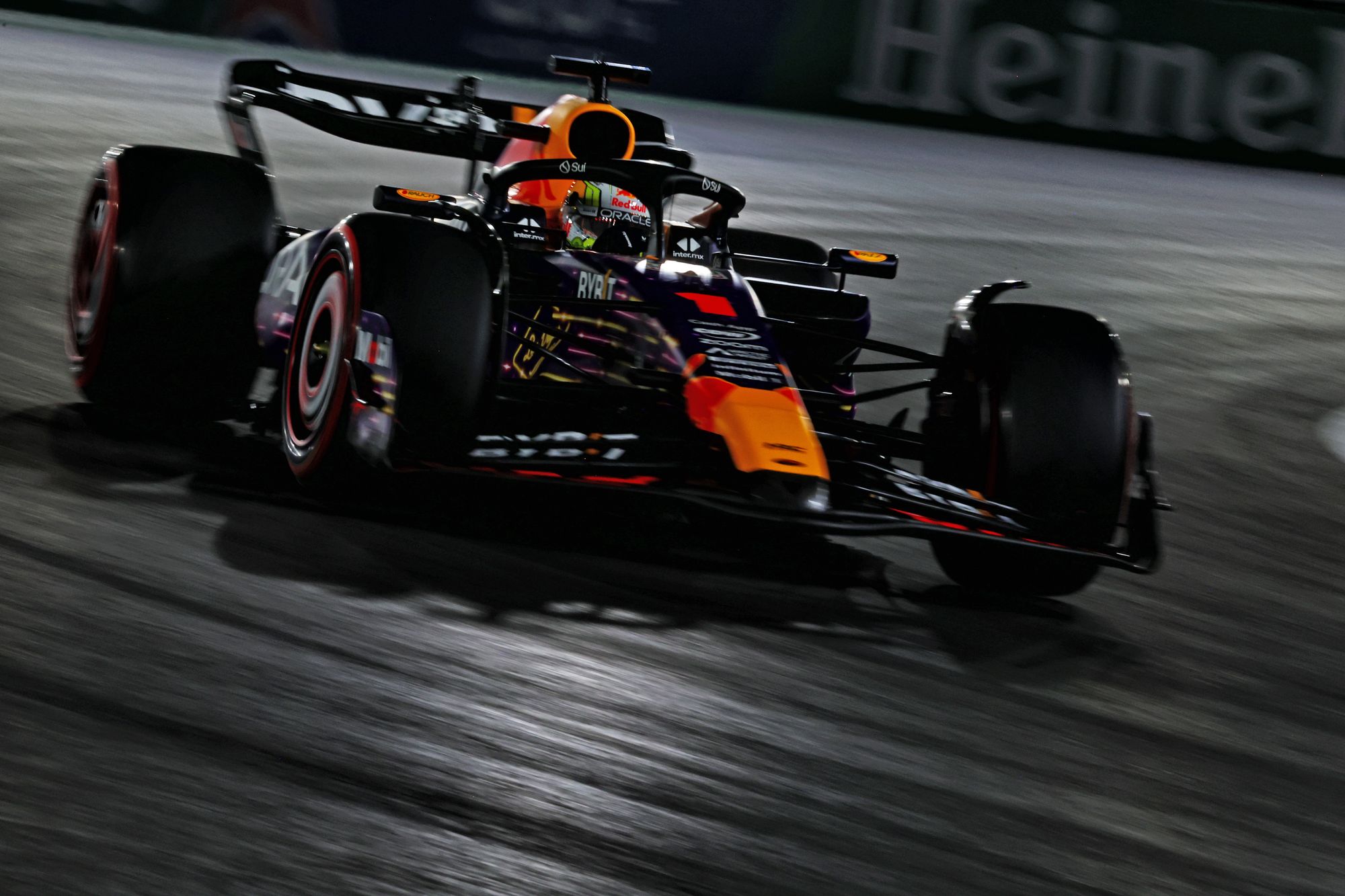
Yet each car is different and is inflexible around different traits. They each have their own sweet spot of downforce levels and set-up range. So in situations such as a cold track with lots of tyre-cooling straights and no high-speed lateral forces, different cars dip in and out of the tyre window in different ways.
This volatility was also in Mexico – where the problem was how quickly the track temperature changed and how that took it past the threshold of balance between front and rear – and at Zandvoort, where it was unusually cool. Vegas has given us another variation of that. Ground effect suspensions and extremely temperature-sensitive tyres make for some odd outcomes when the conditions are outside of the norm.
Those factors are also responsible for the varying competitiveness of the Red Bull relative to the opposition, sometimes a serenely comfortable polesetter, other times playing second-best over one lap to Ferrari. Adrian Newey has confirmed that the Red Bull – both the current RB19 and its 2022 predecessor – were conceived to equalise as far as possible the stresses on the front and rear axles.
That’s how its aero map was built, with everything else subservient to that. Where that takes you once you proceed along that path will bring you a different set of traits to a car conceived, like the Ferrari, around maximising slow corner performance.
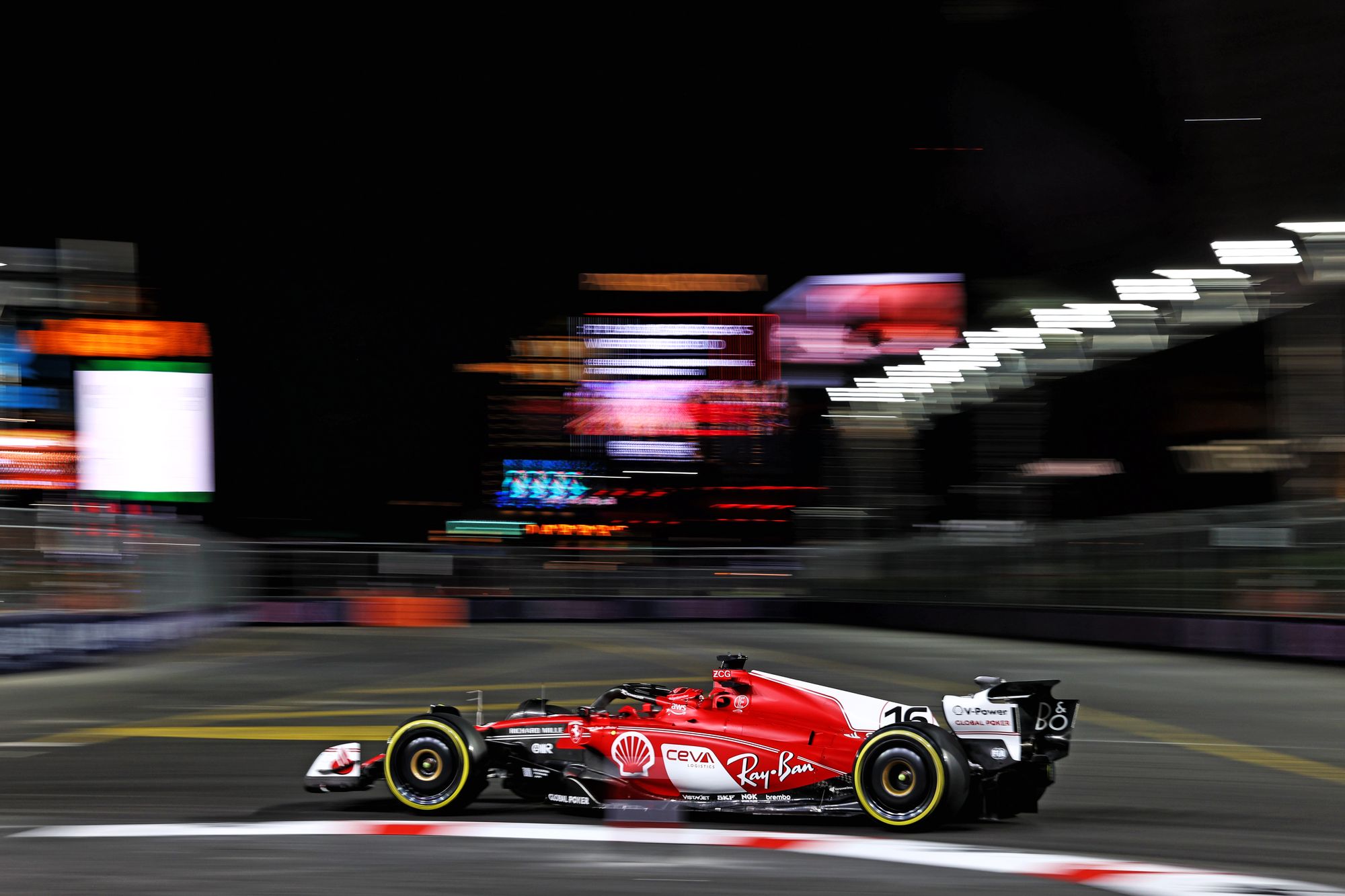
The Ferrari power unit, with its small turbo and long inlet intakes, prioritises low-speed response and has a distinct advantage over everyone there. Ferrari reasoned, as technical director Enrico Cardile recently explained, to maximise that advantage with its aero map for this car, even to the extent of sacrificing the high-speed strength of last year’s car.
That aero map is a major part of why the car can switch on the front tyres more quickly than the Red Bull. It is using the dive of the car under braking to enhance the aerodynamic traits in those slow corner approaches, putting more load on the front tyres in the process. The Red Bull, which is all about a stable aerodynamic platform which minimises the changes in load between front and rear, can struggle to generate that front tyre temperature as quickly.
The Ferrari also has very good aero efficiency at low-downforce wing levels. But that front-favouring aero map means it has to surrender high-speed rear downforce if it’s not to become too unstable. The Red Bull’s aero efficiency is greater at higher downforce levels, as its sophisticated underfloor really starts to deliver. So at tracks comprising low-speed corners, its sweet spot is to run with more wing than the Ferrari. At high-speed corner tracks, its sweet spot is to run less wing than the Ferrari.
So bring these two cars to a track compromised of long straights, slow corners and on which the temperature is very low – and obviously the Ferrari is going to be at an advantage over a single lap. Great down the straights, fast into and out of the slow turns, no under-temperature front tyres. That’s how it’s looked right from the start of the weekend. But in the long runs of FP2 a very different picture emerged, one where the even load between front and rear on the Red Bull brought Verstappen his usual advantage.
Red Bull's clever trade-off
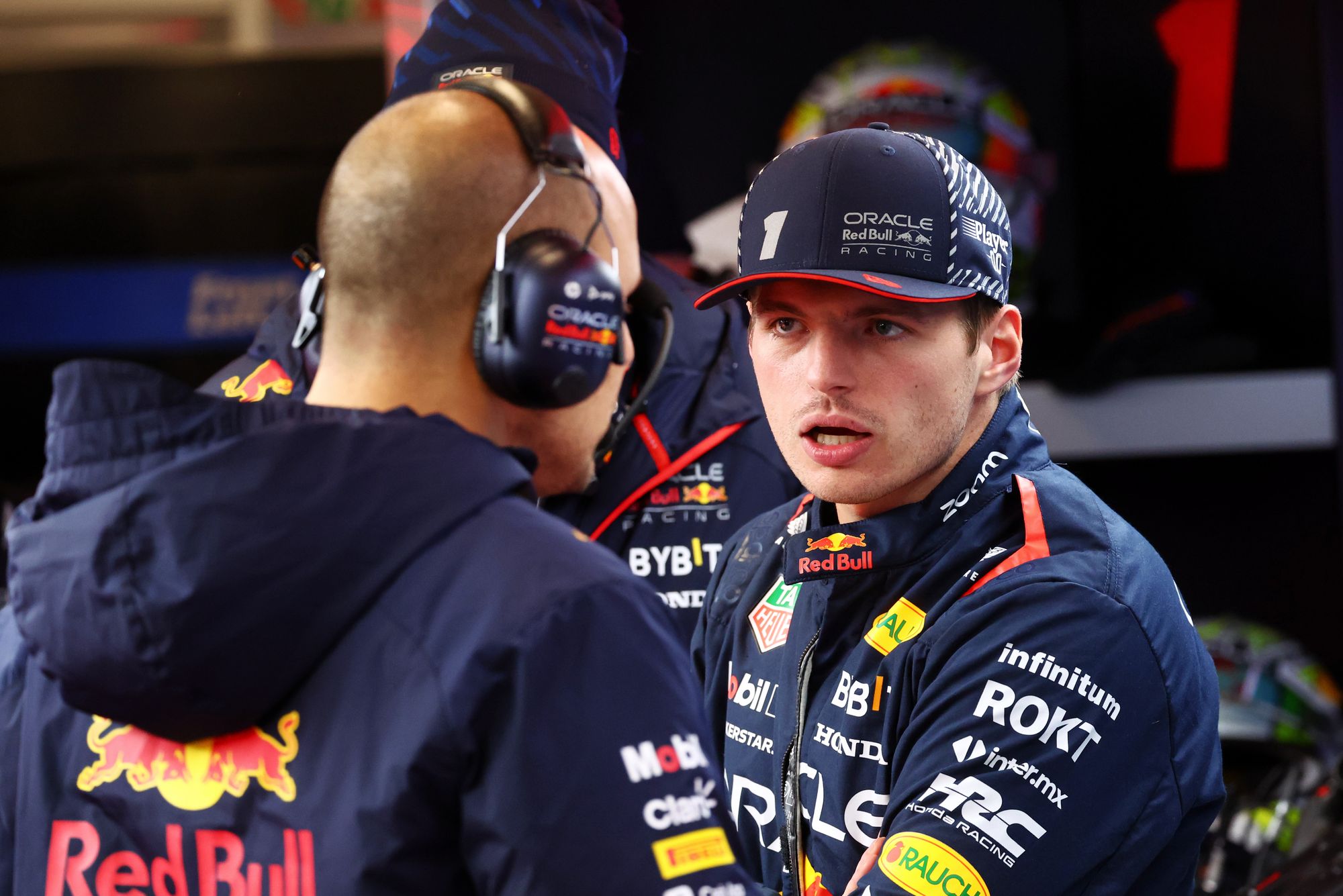
But once that data was analysed, Red Bull had something of a conundrum. Realising it was unlikely to outqualify Leclerc (even though the 10-place grid penalty for Carlos Sainz was very convenient), it needed to be able to pass him in the race. So before qualifying it lowered the wing level of Verstappen’s car. It took it a little further out of its sweet spot – thereby increasing Ferrari’s single lap advantage – but made it more feasible for Verstappen to be able to overtake.
“Yeah, we dropped the rear wing for quali,” confirmed Max, “and it took me a time to get into the rhythm of it like that.”
The natural expectation is that the Red Bull’s superior tyre usage will hand Verstappen the race day advantage over Leclerc, as FP2 suggested. But that FP2 long run was done with the Red Bull’s higher wing level. Will that tyre advantage still be there with the skinnier wing?
“I think we are closer in race pace to Max than at other races,” said Leclerc hopefully.
“Yeah, it will depend a lot on who grains their tyres more,” said Verstappen of the unusual tyre challenge here, where it’s not about controlling temperatures but limiting the graining of the front-right. “We’ll have to wait and see – and the beautiful thing is there is no sprint race to find out first.”
Williams's surge
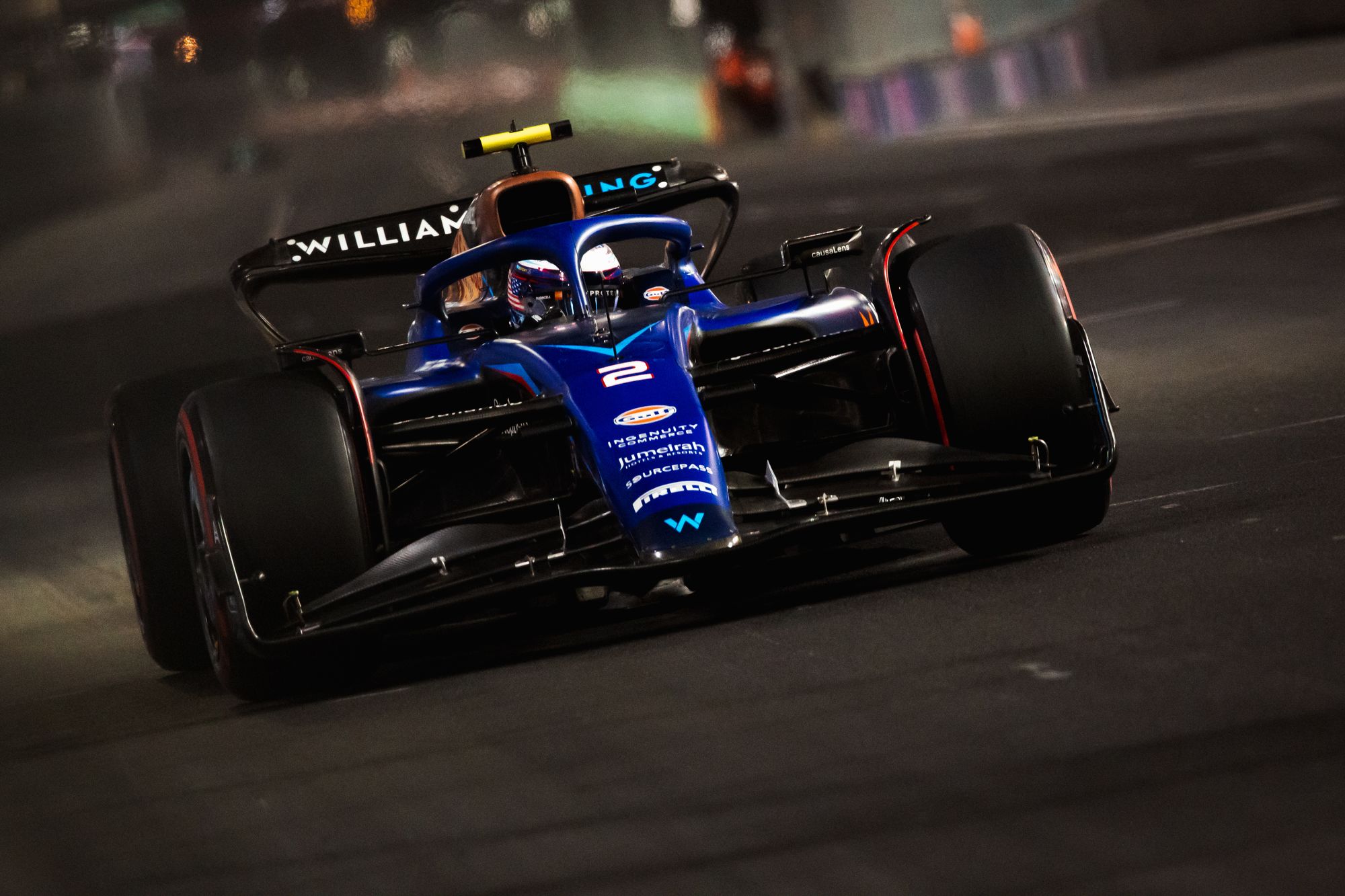
What worked for Ferrari also worked spectacularly well for Williams, with both its cars in Q3, Alex Albon and Logan Sargeant a respective sixth and seventh.
The reasons were very similar, as team boss James Vowles explained. “We have very good efficiency at low downforce levels and the cool temperatures suit us very well. Normally, we tend to run hot with the rear tyres but at a track of 14-degrees C it’s perfect for us.”
In the twists comprising Turn 5 to Turn 9, Albon drops around 0.6s to Verstappen. But over the lap, the Williams’ strong straightline and its good tyre temperature at the start of the lap ensures he’s only 0.2s adrift overall.
Hamilton and McLaren's misery
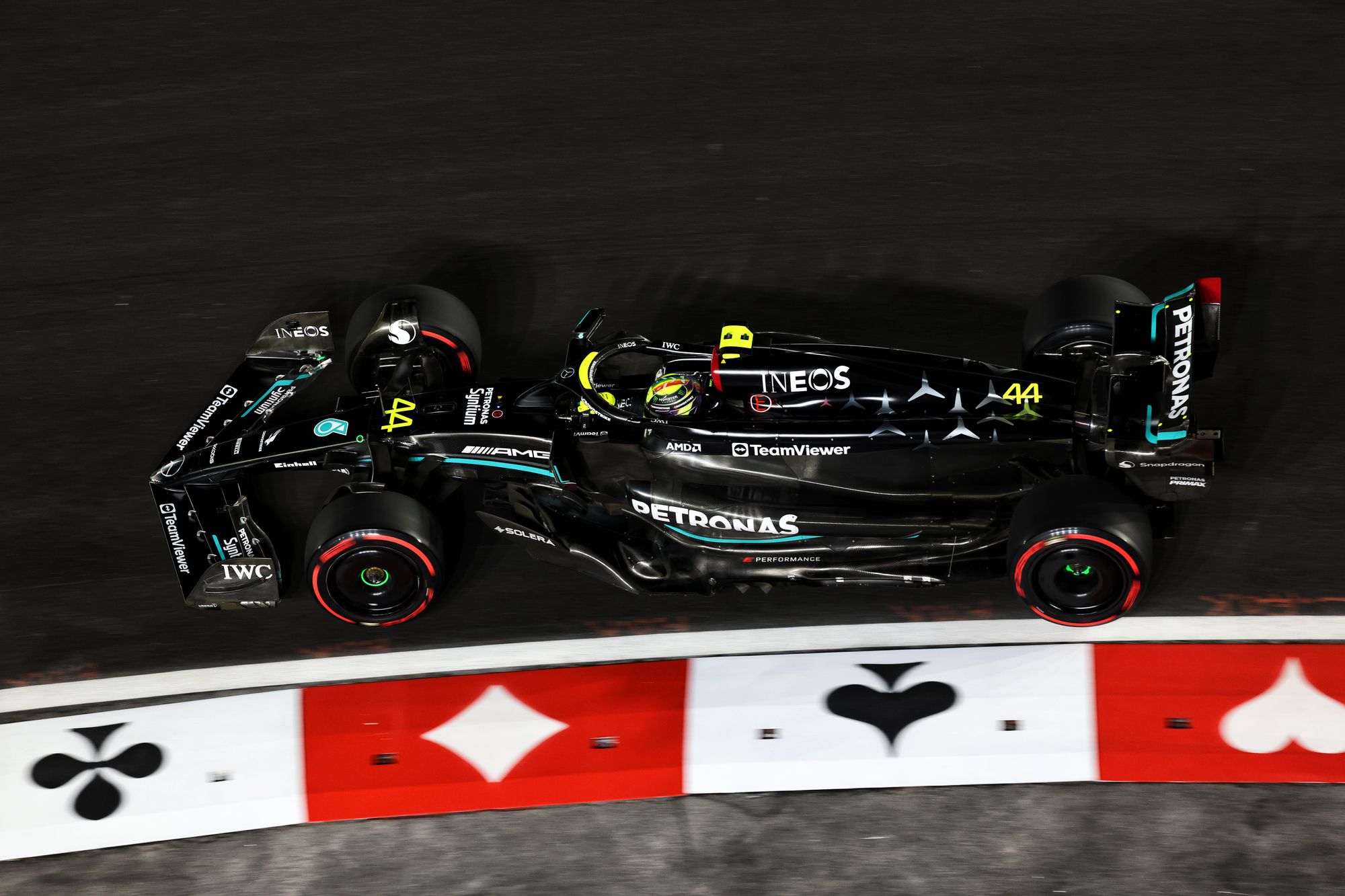
At Mercedes, a difference of 4-deg of tyre temperature between George Russell and Lewis Hamilton was worth 0.5s of lap time in Q2 and was the difference between Russell going through to Q3 and qualifying fourth there and Hamilton not getting through at all. As can be seen from their preceding runs in the table below, they were very evenly-matched until that final Q2 run when, with the track grip ramping up fast, there was suddenly a 0.577s gap between them. This was purely about where Lance Stroll’s Aston was positioned on Hamilton’s tyre prep lap. Creating the gap in front of him lost Hamilton the tyre temperatures – and that was all it took to lose so much performance. “Just no grip,” as Hamilton recounted. Russell in the same car with the same wing level and very similar set up had plenty of grip, just as had Hamilton up to that point.
| Russell | Hamilton | |
| Q1 | 1m34.7s | 1m34.7s |
| 1m34.2s | 1m34.3s | |
| Q2 | 1m33.9s | 1m33.8s |
| 1m33.3s | 1m33.9s |
McLaren, with a car unsuited to slow corners, didn’t pick up much of the track’s increasing grip as Q1 unfolded and made the fatal mistake of assuming it could stay out on old tyres and still get through, when hindsight shows it really needed to have burned up a new set each for Lando Norris and Oscar Piastri. So a car which was probably perfectly capable of qualifying P4-5 went out in Q1.
That was just another manifestation of how capricious this combination of car and tyre makes the competitive form.


